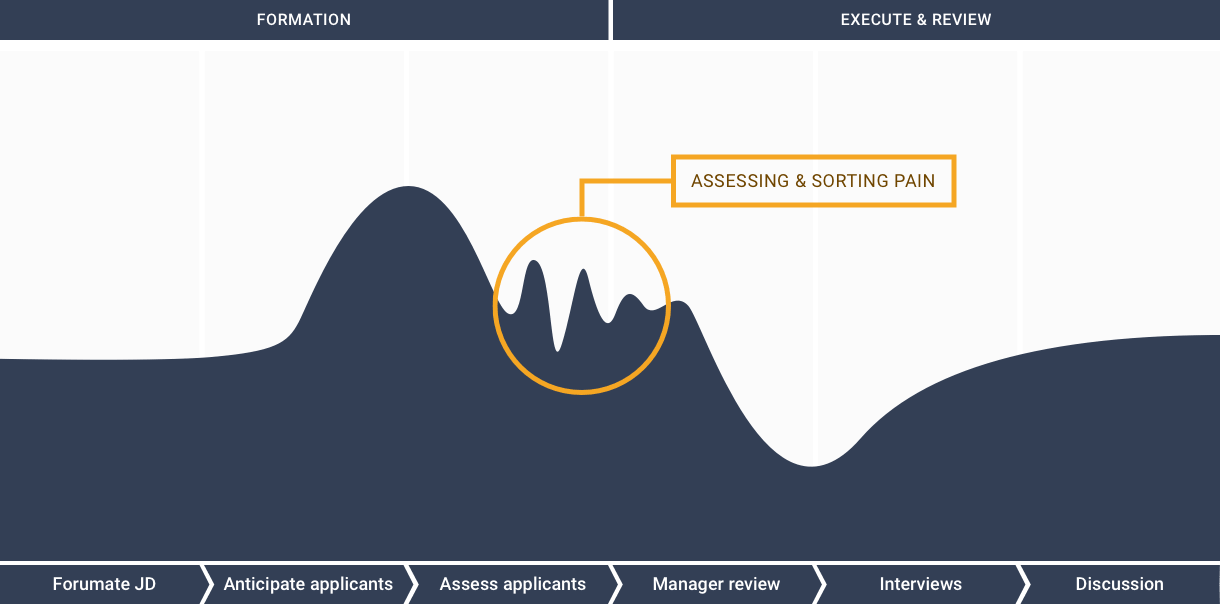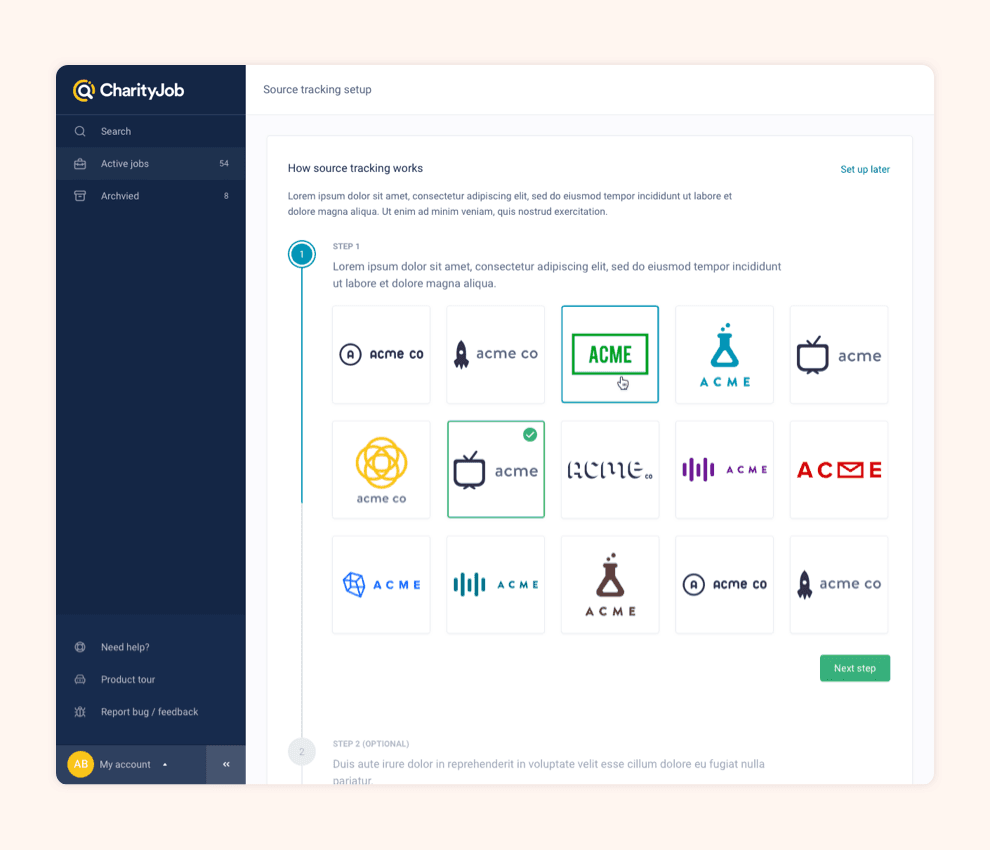Better & ethical recruitment in the third sector - CharityJob
CharityJob is the UK’s leading job board specialising in the third sector. As such, its aim is to connect passionate and talented candidates with inspiring charitable organisations across England, Wales, Scotland and Ireland. In order to ensure recruiters were finding the right candidates for their roles, it was necessary for us to rebuild the recruiter dashboard, ensuring a seamless hiring experience.

Challenge
I was tasked with creating a new applicant tracking system (ATS) named Smooth Recruit. This ATS would connect directly to CharityJob, allowing recruiters to find, sort and communicate with suitable candidates for their roles. As the sole product designer, I worked on all aspects from start to finish, which included five stages of design thinking: empathise, define, ideate, prototype and test. I then created the UI and passed it onto a group of magicians (also known as developers) who made it come to life.

Understanding and empathising with users through interviews
After interviewing ten users, we realised our presumptions of what users wanted were dead wrong. They all had one thing in common: they wanted to save time.
“The main reason to use an applicant tracking system would be to save time in the [hiring] process.”
The research participants indicated that the hiring process was quite an emotional experience, especially with the time invested in looking for the right candidate. It was clear to us that it took a toll on their day-to-day lives. They spoke about the frustrations they faced in collaborating with managers on creating job descriptions and interviewing. The process was quite draining with plenty of highs and lows—consuming time and energy they could be using elsewhere.

Understanding users in this way allowed us to focus on exploring ideas that made collaboration more accessible and filtering candidates more efficient.
Assembling a crack team to brainstorm idea and solutions
From the user interviews, we learned that fancy features were not crucial to our users. They did not care if an applicant tracking system had candidate pools from people who applied to a job in the past. Our discovery was especially true in small-to-medium organisations. Their main concern was hiring the right candidate and saving time in the process.
“How might we help recruiters to find the right candidate in the most efficient way possible.”
I assembled a few of our sales associates, software testers, product managers, developers, copywriters, data analysts and senior managers for a brainstorm session. Bringing in perspectives from different teams provided terrific insights and ideas for tackling the issues. Sales, having immense experience dealing with recruiters in charities, had a good understanding of common problems and complaints. Developers, on the other hand, shared their knowledge of the logical implementation. The brainstorming session pushed us from ideation to sketching out user flows using the 6-8-5 method.
6-8-5 is a method of sketching out user flows in 6 to 8 screens within a 5-minute timeframe. The best practice is to do it on an A4 sheet divided into 8 or 6 boxes with a thick pen, like a sharpie.


Ideas for testing interactive prototypes with users
I created wireframes and prototypes using HTML, CSS and JS. These included current and future features we planned to implement. When we took it for testing, our users were quick to point out the flaws. Through this user research, we were able to make iterations until we finally came to a solution that worked.
Take, for example, the grid criteria feature. Something we knew recruiters wanted yet nobody was able to locate in the prototype. The solution was easy: change the placement of the button. We also learned that layout was well-received 50% of the time, so rethinking the design was essential.
The continued iteration and communication with users helped ultimately shape the design of Smooth Recruit, iron out future features and understand our users’ needs better.
Branding for Smooth Recruit
I was given the task to create the logo for smooth recruit. The task was to come up with something quick, easy but impactful to represent recruiters and candidates.

The results and impact
Compared with the previous applicant tracking solution on CharityJob, Smooth Recruit not only has a shiny new face but functions better according to our users’ needs. The previous ATS on CharityJob had a minimal use rate due to the complexity and difficulty. Smooth Recruit reduces the cognitive load on recruiters, making it easier to use.


The newly produced Smooth Recruit is also more visually appealing than its predecessor. It allows the user to achieve their ultimate goal, finding the most suitable candidate for their organisation. The product is still in development and awaiting the initial release with the goal of saving time and making recruitment a better process for our users.
Main challenge and lesson learnt
A design thinking approach was new to the company. I was excited to share the five-step iteration process, especially when seeing different teams come together to collaborate and build a product in harmony. The importance insights from different groups can bring to a product is priceless.
Next steps
The new design validated our hypothesis that recruiters want to save time and hire in parallel to the core values of their organisation. It would be great to have a ‘gamification’ system of some sort to keep users motivated in the process. With that said, I am looking forward to continuing to collaborate with a diverse team in the future.